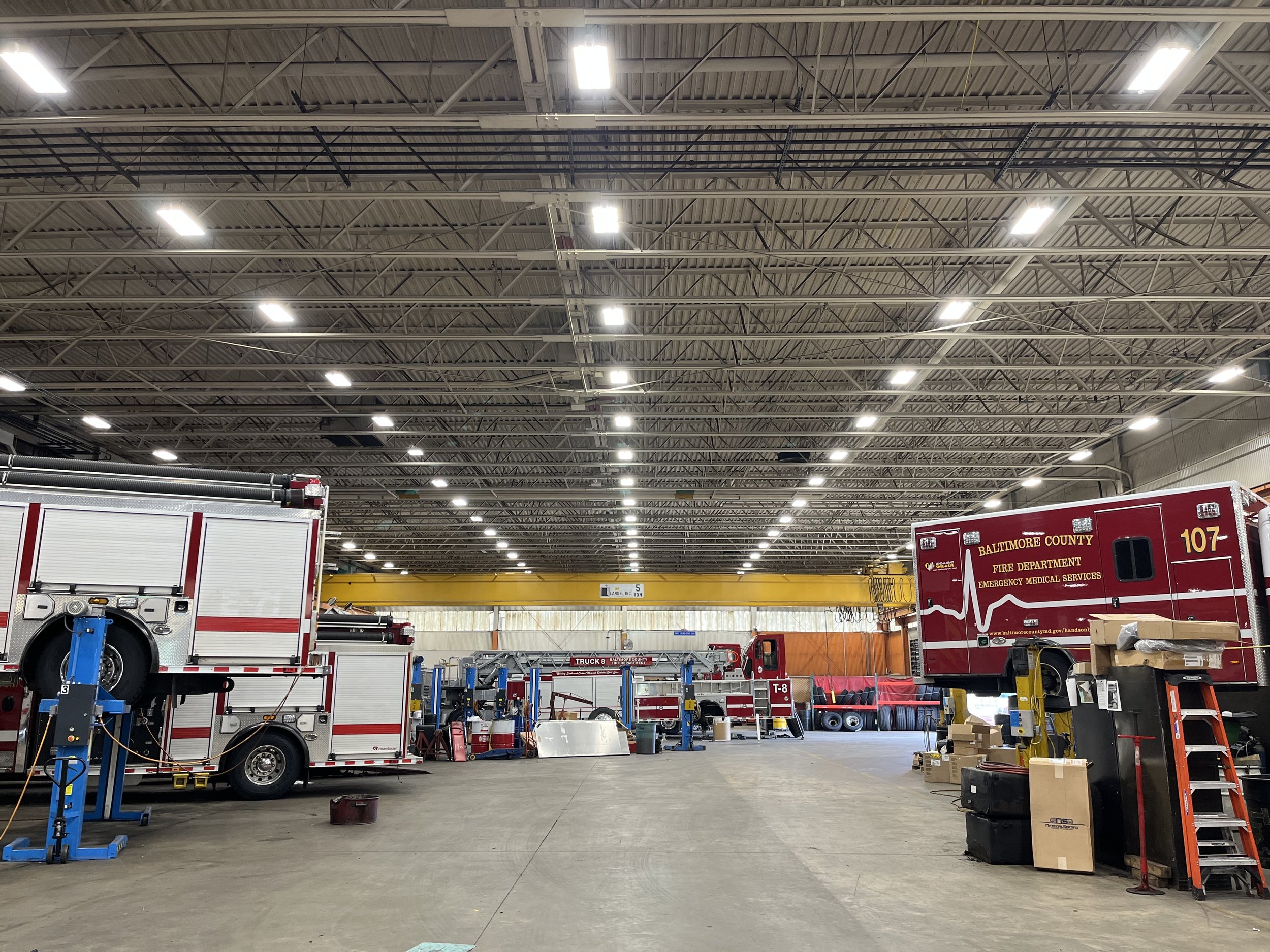
Baltimore County
The project reduced average EUI by 58%, and greenhouse gas emissions by >900,000 kg CO2e in Year 1.
Estimated Annual Savings: $265K and 13,250 MMBtu
Project Highlights
Reduce annual electricity usage by 2.2MM kWh
Reduce annual natural gas usage by 5,825 MMBtu
Reduce annual water usage by 929 kGal
Reduce average EUI of the site by 58%
Reduce emissions by >900,000 kg CO2e in Year 1
Energy Conservation Measures
Steam system decommissioning (replacement with natural gas condensing boilers and infrared heaters)
Right-sized air compressor
Building control strategies
Lighting upgrades
Domestic water fixture upgrades
Project Overview
In 2023, CEG completed construction of an ESPC project for the County of Baltimore, Maryland. The project encompasses two facilities: Drumcastle Government Center, a 3-story, 180k SF office building housing the Baltimore County Department of Health and Human Services and other administrative offices; and Glen Arm Maintenance Facility, a 200k SF building with administrative office space and shop areas for fire service, truck and tractor repair, traffic signs and signals, and assorted repair work.
Unique Approach
CEG implemented seven ECMs that will significantly decrease utility costs and O&M burdens for the County. Along with more traditional ECMs such as converting lighting fixtures to LEDs, upgrading domestic water fixtures, and implementing building controls strategies, CEG decommissioned the central steam plant at Glen Arm and replaced it with a new condensing boiler and infrared (IR) heaters. In contrast to the existing steam convection heaters (which physically fan warm air down from the ceiling), the IR heaters provide heat via long-wave radiation, reducing stratification and providing a more comfortable level of warmth throughout the space. Now that implementation is complete, we are providing an extended warranty on the equipment. Also at Glen Arm, we installed a new central building automation system (BAS), and used it to integrate heating and cooling equipment. This helps standardize equipment schedules and space temperatures, improves building functionality, and reduces electricity and natural gas consumption through equipment setbacks.
For financing, CEG worked with the County to leverage unconventional financing for this ESPC project. Instead of utilizing third-party financing to pay for the project over the contract term, the County felt confident enough in the financing aspects of the project that they opted to pay directly for the project upgrades upfront. As a result, the project is funded directly from the County’s existing budget and will be paid off from savings in 14 years.
Results
This project addresses many of the County’s critical infrastructure and maintenance needs and helps the County make significant progress toward its goals for energy efficiency and water reduction. This project is expected to avoid 13.2MM kg of CO2e emissions over the course of the contract term, reduce site EUI by more than half, extend the lifetime of HVAC, controls, lighting, and domestic water systems, improve occupant comfort, and reduce the County’s O&M burden.
